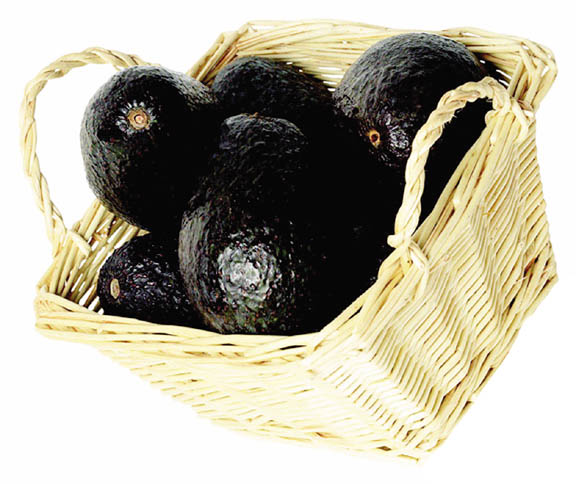Brazilians add them to ice cream. Japanese eat them in sushi
rolls. Koreans mix them with milk for use in facials and body
massages. Filipinos puree them with sugar and milk to make a
dessert drink.
Brazilians add them to ice cream. Japanese eat them in sushi rolls. Koreans mix them with milk for use in facials and body massages. Filipinos puree them with sugar and milk to make a dessert drink.
Latin Americans wrap them up and give them as wedding gifts. Most Europeans recognize them as an aphrodisiac.
And you thought avocados were one-dimensional, showing up each year next to a bag of tortilla chips at summer parties.
Think again.
The luscious fruit of the avocado can help produce an almost limitless culinary bounty, straying far beyond a bowl of guacamole.
A cousin of apples, pears and bananas, the avocado has a silky texture and a distinct flavor. It’s smooth, buttery, easy to digest and lends a melting richness to meals.
Al Castaneda, owner of Dona Esther Mexican Restaurant in San Juan Bautista has said avocados are versatile and add a good flavor to whatever dish you decide to use them in.
Avocados are added at the last minute to soups. Chopped, the fruit is a mellow complement to a Mexican supper of hot tortillas, green tomato salsa and fresh cheese. Cut into long, thin slices and laid on a plate alongside picadillo, or Latin has, the avocado’s texture and fleeting anise/hazelnut-like flavor calms the spice.
In America, the avocado is found most in Mexican dishes, and those roots run deep.
The use of the avocado at a favorite taqueria is not part of the “Americanizing of traditional Mexican food. Avocados are very traditional.”
Contrary to lore among avocado growers in California (home to nearly 95 percent of the nation’s crop), the first avocado was eaten not in California but in Mexico by a Mayan princess in about 291 B.C.
Noted Mayanist Sophie Coe reported in “America’s First Cuisines” that wild avocado seeds found in southeastern Mexico have been dated at 8,000 to 7,000 B.C. and the fruit was being cultivated in Tehuacan by 7,000 to 6,000 B.C.
Today in Mexico, avocados, taken from the Spanish word aguacate, are served in many ways, often with tacos or at the start of a meal with hot tortillas and other snacks. The fruit also complements rice dishes, refried beans and beef, chicken or fish.
In northern Mexico, green tomatoes are added to avocado dishes and in Veracruz, it is made tart with lime juice to accompany fish.
But what Mexican food lovers demand most are avocados mashed in a bowl with spices and chopped tomatoes, simple guacamole.
However, much like the olive, avocados contain fat along with their other nutrients. For years, this fact has discouraged people from eating them.
One medium avocado contains 305 calories, 250 of those from fat. Eat a whole one and you consume 30 grams of fat, as much as a reasonable diet recommends for an entire day.
The positive news is that most of the fat in an avocado is monounsaturated, often called the good fat.
If you’re watching your fat intake carefully but still want to reap the benefits of this versatile fruit, try applying a thick avocado mask to your face. Beauticians favor this method because of the fruit’s rich, oil-laden consistency.
Or just ignore the fat, eat all you want and spice up your love life.










